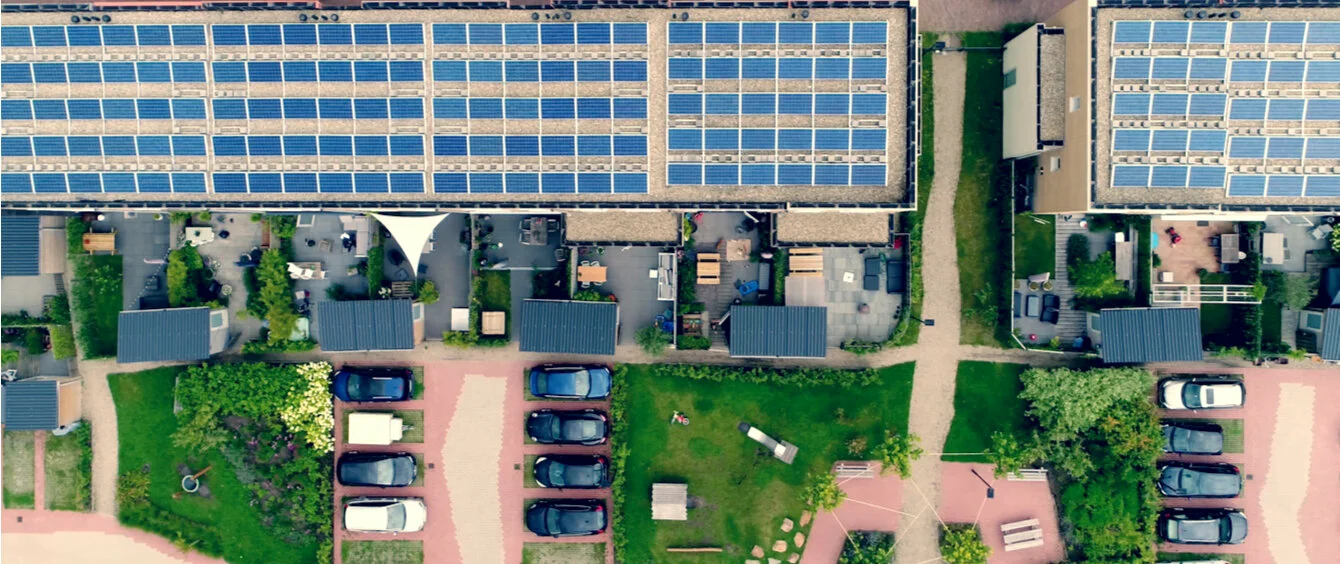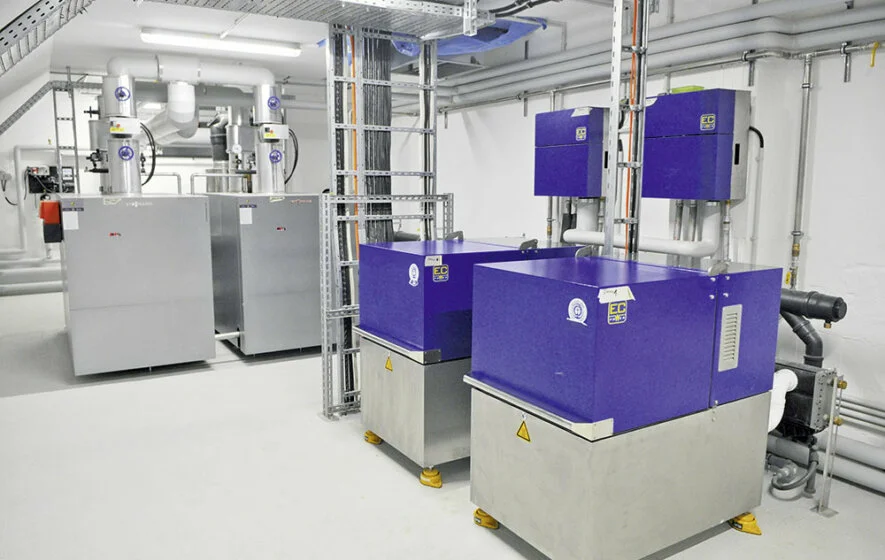According to a number of studies, three to four million homes in Germany could benefit from landlord-to-tenant electricity. Landlord-to-tenant electricity supply is the expression used when the homeowner produces electricity themselves and sells it on to their tenants. The most important generation method is considered to be photovoltaic, but combined heat and power (CHP) plants are also possible and supply heat as well as electricity.
The government is supporting landlord-to-tenant electricity – to increasing success
For some time now, landlord-to-tenant electricity has been deemed a crucial part of the energy transition. Not only as remote power generation would help to relieve the grids, but also as it would promote the use of low-emission energy. However, despite the fact that the German government is, subject to certain conditions, subsidising the use of solar panels in landlord-to-tenant electricity supply, the cooperatives and housing companies are not even close to implementing the corresponding business model across the board.
In fact, the figures are somewhat sobering, as reported by Handelsblatt (in German). According to information from the German Network Agency, only approximately 15 megawatts (MW) of installed photovoltaic capacity, which benefits from the landlord-to-tenant electricity subsidy introduced in 2017 under the German Renewable Energy Act (EEG), were registered by June 2019. To clarify, photovoltaic facilities with a peak output of 15 MW produce less than 14 megawatt hours (MWh) of power a year. Statistically speaking, that would only be enough to cover the private power consumption of around 10,000 people. This is miles away from the cap, which has been set at 500 MW.
Complications are ruining business
The German Ministry for Economic Affairs and Energy (BMWi) had undoubtedly been aiming for more. “Unfortunately the expansion of landlord-to-tenant electricity has not yet managed to meet expectations”, says the BMWi in Handelsblatt. According to the article, the Ministry has been working on a report looking into the reasons for this lack of interest, and their findings will be presented to Germany’s Lower House of Parliament by the end of September.
Despite the lure of subsidies, as it stands, landlord-to-tenant electricity is more attractive to real estate owners looking to support the cause, rather than shrewd capitalists, believes Ingrid Vogler, Energy Consultant at the German Association of German Housing and Real Estate Enterprises (GdW). The profitability of the plants themselves is not the issue.
"Energy legislation is so complex that housing associations and cooperatives must either hire their own experts for the provision of landlord-to-tenant electricity or hire external service providers.” Ingrid Vogler, Energy Consultant at the German Association of German Housing and Real Estate Enterprises (GdW)
There are, in fact, a growing number of start-ups answering the call, offering comparatively lean solutions, says Vogler, and municipal housing companies are being supported by municipal utilities. However, energy legislation issues are not the only worry. There are also difficulties in relation to tax law if, for example, companies and cooperatives suddenly have to pay corporate tax on rents because they generate sales by selling electricity. Vogler says that the fact that, at the end of June, the government became more lenient with rental cooperatives that build PV systems is certainly providing short-term relief, but is by no means a solution: “Instead of isolated measures, we need a legal framework that makes landlord-to-tenant electricity supply a possibility for everyone as well as being economically attractive.” The industry is thus calling for the operation of a PV system to be treated in the same way as the operation of a heating system in accordance with the German Corporation Tax Act, for example.
CHP profitable thanks to subsidies
Cord Müller knows the hurdles of implementing landlord-to-tenant electricity contracts only too well. As Managing Director of EC Power, he sells CHP units all over Germany: “Operators should not shy away if they don’t have expert knowledge. Competent service providers can easily offer help where needed.”
But CHP plants are currently only financially viable due to the subsidies introduced through combined heat and power legislation. This is mainly because CHP technology is still waiting on prices to fall as they have done for photovoltaics in recent years. The delay in affordability is mainly simply due to the fact that mass production is not yet possible due to the low number of orders. After all, a CHP unit for a six-party house including installation currently costs around 25,000 euros.
Nevertheless, Müller says, even such mini CHP units could pay for themselves in just four years, depending on capacity utilisation and installation costs. Landlords can agree the provision of heat supply via their rental agreements, and thus increase their planning security. As with other utilities, the maximum term for electricity contracts is two years, with an automatic extension of one year.
Landlord-to-tenant electricity for the energy transition
Even if landlord-to-tenant electricity would be practically non-existent in Germany if it weren’t for the existing subsidies, they are not GdW consultant Vogler’s problem area: “Not the subsidies, but the economy will make the main difference when it comes to taking the plunge.” And she is convinced that with simpler framework conditions, this is not as far off as one might think. These plants – whether solar or gas-fired – would then still be available to the system when the subsidy ends.
Infobox
In accordance with the German Landlord-to-Tenant Electricity Act, the countrys government only subsidises photovoltaic systems with a maximum capacity of 100 kilowatts (kWp). For electricity consumed locally, the system operator receives between 2.2 and 3.8 cents per kilowatt hour (kWh) – but only if certain conditions are met: First and foremost, a landlord is not allowed to force a tenant to purchase the landlord-to-tenant electricity, for example by making this a condition of a rental agreement. In addition, the electricity price may not exceed 90 percent of the base electricity rate in the area.
Support for CHP plants is not based on the Landlord-to-Tenant Electricity Act, but on the Combined Heat and Power Act. The amount and duration of the relevant subsidy depends on the electrical output (kWel) of the plants and can be as much as eight cents per kWh. There are also investment subsidies for mini cogeneration units. The German Office of Economics and Export Control (BAFA) administers these subsidies and has published an overview on its website.
Coincidentally, the Credit Institute for Reconstruction (KfW) also subsidises PV systems and CHP installations via promotional loans.
Combined heat and power stations could then become an integral part of sustainable neighbourhood concepts, explains Vogler. In addition, experts estimate that up to 3.8 million apartments in Germany could be supplied with landlord-to-tenant electricity. Moreover, subsidising landlord-to-tenant electricity could also drive the energy transition. Wind farms and ground-mounted photovoltaic arrays are primarily erected in rural areas, but the generated electricity is mainly consumed in cities. If more electricity were produced in the cities, this could relieve the burden on the power grids.
“There is currently massive untapped potential for low-emission energy supply in this area.” Ingrid Vogler, Energy Consultant (GdW)
Photo credits: GLF Media, shutterstock.com

